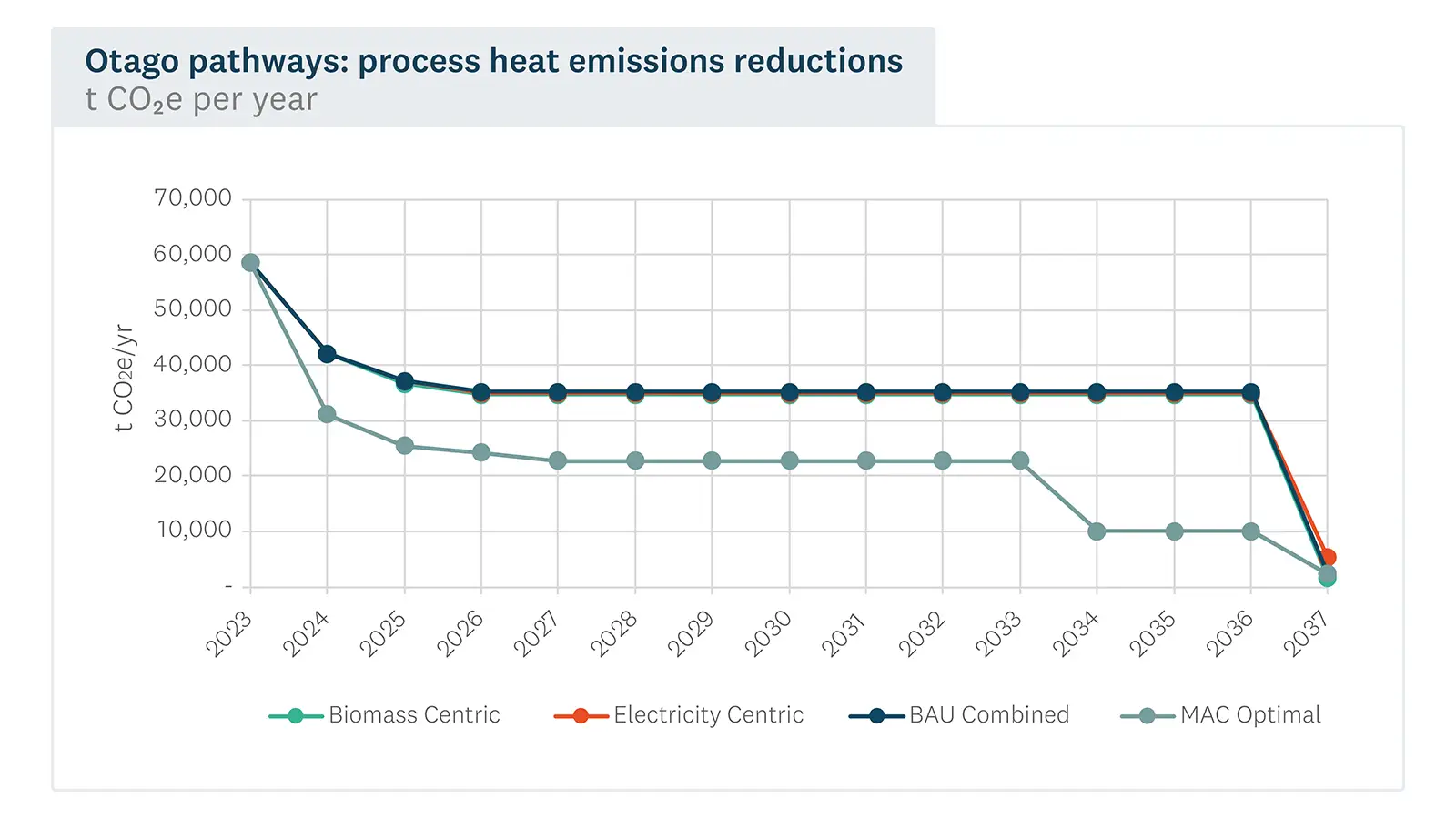Benefits for Otago
An Otago specific decarbonisation pathway will enable:
- early insights for decision makers to improve efficiency and future proof infrastructure investments
- best use of information sharing to encourage demand flexibility through collaboration
- demand for fuel suppliers and technology providers to provide the confidence for accelerating the development of new supply chains or capacity building initiatives
- a broad view of biomass resource availability and the potential volumes, costs and demand for bioenergy.
About the Otago RETA
A total of 51 sites – spanning the dairy, meat, industrial and commercial sectors are covered by the Otago RETA. These sites either have process heat equipment larger than 500kW or are sites for which EECA has detailed information about their decarbonisation pathway. Collectively, these sites consume 746TJ of process heat energy, primarily from coal, and currently produce 59kt per year of CO2e emissions. RETA aims to eliminate as much of these process heat emissions as possible.
The focus of the Otago report – the culmination of phase one of the RETA programme, is the fuel switching decision and the key role demand reduction plays in enabling fuel switching. Both biomass and electricity are considered as potential fuel sources.
RETA also recognises the importance of efficient demand reduction and thermal efficiency measures for reducing energy consumption and right sizing the boiler investment, which in turn affects decision-making around fuel switching.
The report has illustrated a range of decarbonisation pathways, all of which demonstrate how the combined decisions of a range of process heat users may lead to common infrastructure challenges and opportunities from a supply perspective. Across the 51 sites, there are 79 individual projects across demand reduction, heat pumps and fuel switching. The 'MAC Optimal' pathway sees fuel decisions that result in 14% of the energy needs supplied by electricity and 86% supplied by biomass in 2036.

Insights explored in the Otago report:
- The role demand reduction and heat pumps play in the fuel switching decision and infrastructure investment.
- Security of electricity supply and the impact of different pathway scenarios on electricity demand.
- Timeframes for decarbonisation under different pathway scenarios, that is:
The ‘BAU’ decarbonisation pathway, which uses the project timings in the individual ETAs (or 2036 where unavailable), is the slowest decarbonisation path. The majority of emissions reductions are assumed to occur in 2036.
The ‘MAC Optimal’ decarbonisation pathway with acceleration co-funding doubles the pace of decarbonisation, with 77% of the decarbonisation occurring by the end of 2027.
- The significant potential of biomass as part of the local mix and the work needed to be undertaken with forest owners to understand the logistics, space and equipment needed for harvesting residues.
- The role demand flexibility plays in the overall cost of electrification and the potential use of tariffs for incentivising process heat users to efficiently use flexibility in energy consumption.
Read the report
Download the Otago RETA report and discover the regional benefits of decarbonisation.
Read the summary report [PDF 5.7 MB]
Spare Electrical Capacity and Load Characteristics [PDF 6 MB]
Demand reduction and thermal efficiency are key parts of the RETA process and help with fuel switching decisions.
Next steps and support
Where decarbonisation is financially viable, EECA encourages organisations to explore the potential for acceleration.
EECA is happy to hear from anyone wanting to support the implementation of recommendations in the Otago RETA report.
Email RETA@eeca.govt.nz or kanchana.marasinghe@eeca.govt.nz with any questions.
Wayfinder
-
Co-funding opportunities
-
Explore other regions
-
Explore the RETA tool
